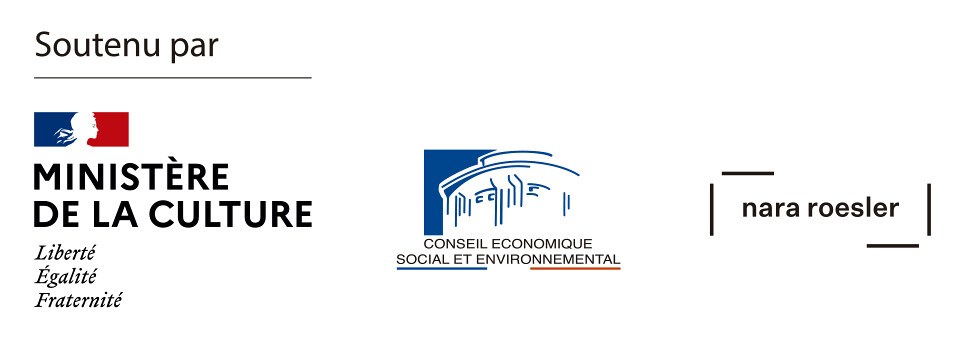Double Trouble
October 17–28, 2022
CESE
9 Place d’Iéna
75016 Paris
France
Curated by Matthieu Poirrier.
In parallel with Paris+ by Art Basel, the Palais d’Iéna—CESE (Conseil Économique, Social et Environnemental) is hosting this year, and for the first time in France, a solo exhibition of the acclaimed Brazilian artist Lucia Koch. Titled Double Trouble, the monumental in-situ project is spread over more than 1,200 square feet. It provides a sensory experience that disrupts the perceptive habits of visitors to Auguste Perret’s architectural masterpiece facing the Eiffel Tower, thanks to gigantic colored and translucent vellums that are constantly animated by the air currents and the passage of spectators through them.
Echoing our troubled political and social period, Lucia Koch’s monumental in situ project for the Palais d’Iéna is part of a double logic too: on the one hand of disrupting the clarity of Auguste Perret’s strict orthogonal plan and, on the other hand, of inventing new kind of colors, which are deployed in real time and space, making the site the source of a new sensory experience. Spectacular, poetic and playful, the main work is spread over more than 1,200 square feet and 20 feet high, that is to say in almost all the spaces of the place, from the main hypostyle hall to the main staircase. It literally submerges the rigorous geometry of Perret under the immense waves of translucent and colored textiles.
The installation is as much about painting (one thinks of Mark Rothko’s chromatic sfumato) as it is about sculpture (one thinks of Richard Serra’s steel plates or Hans Haacke’s Blue Sail, suspended and moved by a fan). Far from these historical proposals, the work of Lúcia Koch is thus highly kinetic and participative, undulating and changing according to the points of view, the number of superimposed layers, the hours of the day, the quality and direction of the sunlight.
In a space where the atmospheric phenomenon seems to invade the architecture, the long panels formed by the curtains extend over several heights. They also challenge the physical limits of the site and even extend beyond the windows of the Palais d’Iéna, crossing architectural walls to extend outside the building, on the street as well as on the interior courtyard.
This main installation is completed by trompe-l’oeil photographs thought in dialogue with the surrounding Perret’s architecture, a set of photographs from “Fundos” series will be placed on the periphery of the main installation. They consist of shots of the interior of simple packing boxes, but which give the impression of representing modernist or minimalist architectures, like that of Perret. Strongly ambiguous about their source, they form an architectural trompe-l’oeil—questioned by the constitutive details of the modest cardboard box that served as a subject—and complete the hollowing out of the space and question our perception of scale and appearances.
The artist
Lucia Koch’s works often engage with investigations around space and its possibilities, seeking to offer ways of understanding, experiencing and inhabiting it. By establishing a dialogue between her artworks and architectural aspects present in the space they occupy, Koch reimagines and interferes with materiality, light, textures, colors and other tangential lines.
Lucia Koch was born in 1966 in Porto Alegre. She lives and works in São Paulo. Recent solo shows include: PROPAGANDA, at Instituto Inhotim, Brumadinho, Brazil (2021); Tumulto, turbilhão, at Galeria Nara Roesler (2019), in São Paulo, Brazil; Casa de vento, at Casa de Vidro (2019), in São Paulo, Brazil; She was featured in the 11th and 13th Lyon Biennale, France (2011 and 2015); the 27th Bienal de São Paulo, Brazil (2006). Recent group shows include: Fabrication. Photography of Architecture after the Digital Turn, at the Museu de Arte, Arquitetura e Tecnologia (2019), Portugal. Her works are included in important institutional collections, such as: Musée d’Art Contemporain de Lyon, France; Museu de Arte do Rio (MAR), Brazil; Museum of Contemporary Art San Diego, USA; The J. Paul Getty Museum, USA; and at Pinacoteca do Estado de São Paulo, Brazil.







